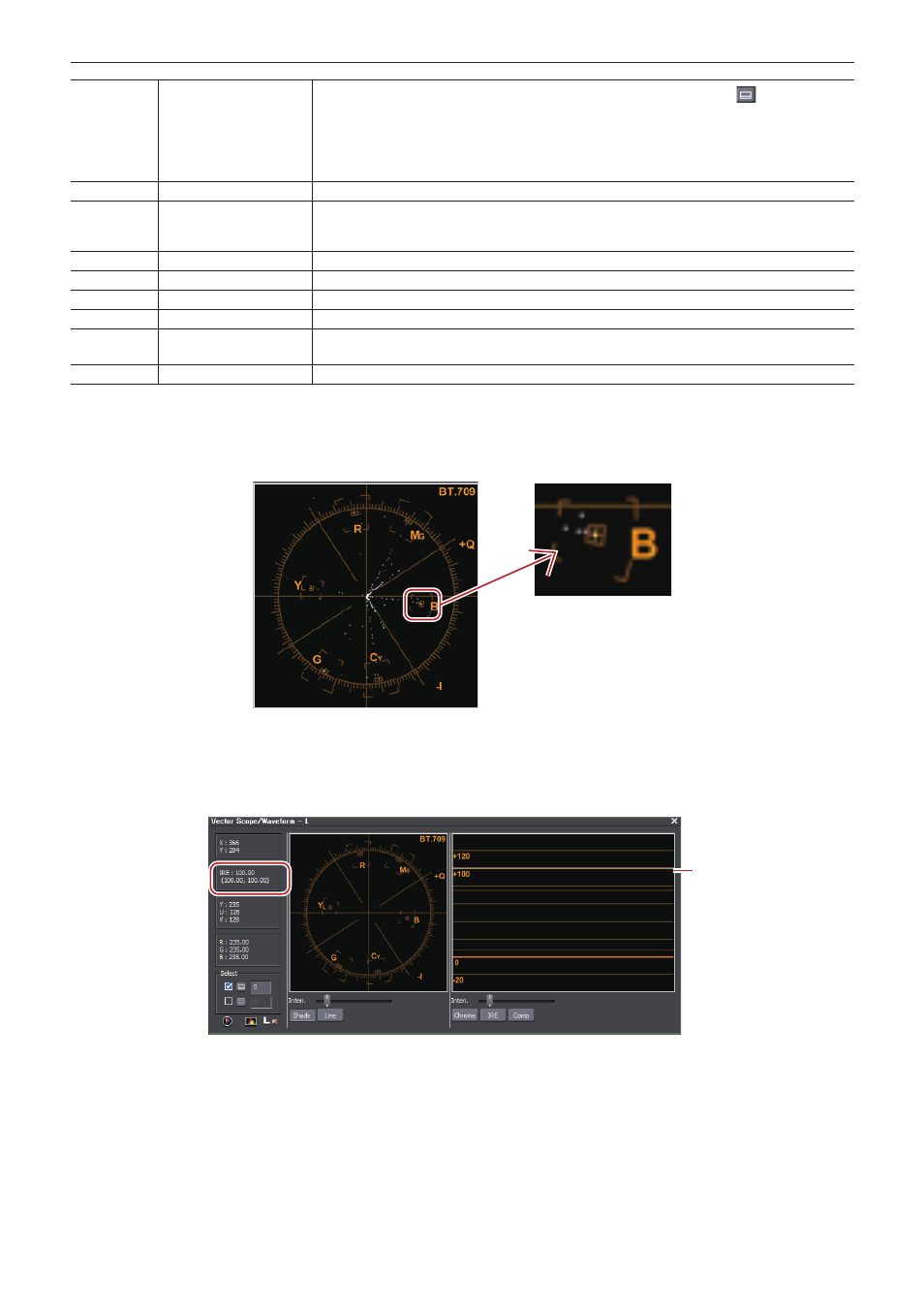Chapter 7 applying effects — checking color data – Grass Valley EDIUS Pro v.7.4 Reference Manual User Manual
Page 345

Chapter 7 Applying Effects — Checking Color Data
345
(4)
[Select]
Display the information of a Y-axis (vertical) position. Check this item, click
, and then click
a position on Recorder screen. You can also directly enter the scanning line.
The box shows the Y coordinate values of that position, and the displays of the vector scope
and waveform are fixed to the color data of that position.
Even after you uncheck the item, the last display of the vector scope and waveform is
reproduced when you check the item box again.
(5)
Show/Hide
Switch the show/hide for the vector scope/waveform.
(6)
L/R switch
In the stereoscopic edit mode, this is displayed when the video of both the L and R sides are
displayed in the preview window. The vector scope or waveform on the L or R side only is
displayed.
(7)
[Shade]
Display the color distribution by dots on Vector Scope.
(8)
[Line]
Display the color distribution by lines connecting between dots on Vector Scope.
(9)
[Chroma]
Display only the color tone factor in the 0 IRE center of the waveform.
(10)
[IRE]
Display only the luminance factor in the waveform.
(11)
[Comp]
Display the composite signal of color tone factor (Chroma) and luminance factor (IRE) in the
waveform.
(12)
Luminance sliders
Use these sliders to adjust the luminance of the monitor.
Example:
Measure the color balance using a vector scope
Measure the color bar recorded in the source clip using the [Vector Scope/Waveform] dialog box.
An adjustment is needed when the light representing the color distribution is shifted far from the reticule center of the vector scope.
Example:
Measure the luminance with waveform to check if it is within the appropriate range
When you place a white color matte clip created in the safe color range on the timeline and measure it in the [Vector Scope/Waveform]
dialog box, IRE100 appears (at the position of (1)).
“Color Matte Clips” (w page 185)
(1)
